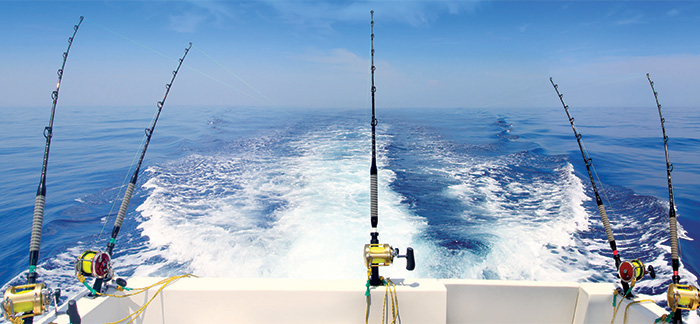Advertisement
Want to catch more fish while trolling? Then you have to carefully consider the details each and every time you hit the water.

Rescue Bay Conservancy near Bella Bella, British Columbia, is one of many scenic anchorages along the Inside Passage. | Photo Credit: Getty Images / Luna Marina
Trolling is one of the most effective fishing techniques you can employ, whether you're looking to score walleye on a Midwestern lake or wahoo in the open ocean. If — that is — you know how the trolling game works. Whether you'll be towing lures or livies behind the boat, these 10 tips are guaranteed winners.
1. Vary your speed when the bite is slow.
Sure, you may already know that X mph is an ideal trolling speed for species Y. But fish change their behavior patterns from hour to hour, much less day to day and week to week. The ideal trolling speed today won't necessarily be ideal tomorrow. Unless you're bailing fish so quickly you can't keep up, try a variation.
2. Stagger your lines' distances from the boat.
Trolling with four, five, or 10 lines at the same distance behind the boat is never a good move. The distance your lines are set should range widely, to cover as much water as possible.
3. Stagger your lines' depth.
Even if you know the bulk of the fish are holding at a particular depth, have a line or two running a little shallower and a line or two running a bit deeper. Not only does this increase your chances of picking up an oddball fish when the bite is slow, it greatly increases your chances of hooking up with a lunker. Fish often school by size, and there are more small fish than large fish. As a result, lines running at a different depth than the main school are often the lines that catch the prize.
4. Jig a rod now and again.
Far too many trollers set the lines out and then depend on the motion of the boat to give their lure or bait all of the action. But the boat's movement through the water is generally steady. Adding some erratic motion to your offering by jigging a rod as you troll often leads to more strikes.
5. Don't troll in a straight line.
Zigzags are usually better. As the boat changes course, the lures behind the rods on the outside of the turn pick up speed, and those on the inside of the turn drop speed. Those on the outside correspondingly rise through the water column, while those on the inside drop. These slight changes and variations can trigger bites. And when trolling surface lures, making them swing across the boat's wake can have an effect.
Tip
When you get a bite and troll back over the same spot without a follow-up strike, make a cloverleaf pattern around it. This lets you probe the areas all around the spot where you had the hit, while repeatedly going back over it.
6. Troll with braid (or wire) line.
Whenever you're trolling, you're depending on the forward movement of the boat and the force of the fish's strike to set the hook. Monofilament has far more stretch than most other types of fishing line, and as a result, the hook is less likely to be firmly set than it is with braid.
7. When in an area with current, troll crosscurrent as opposed to with and/or against the current.
Going crosscurrent, you don't have to worry about how the current is affecting your lure's or bait's speed through the water. Plus, fish generally swim into the current. So if you troll with or against it, you're trolling directly at or away from the fish. Going crosscurrent, you're more likely to pull it through their field of view.
8. If you're trolling with lures, pick ones that have plenty of action without added input from the angler.
Towing soft plastics with paddle tails, for example, is better than pulling ones with straight tails. Those paddle tails will swim on their own, but a soft plastic with a straight tail needs a lot of jerking and movement added by an angler to take on a life-like appearance.
9. Try trolling shallower at daybreak, sunset, and when it's cloudy.
Many species move shallower during low-light conditions, and dive deeper when the sun is high in the sky.
10. Pick an unusual icon on your chartplotter.
Every time you get a hit, make a waypoint with it. Over time, you'll establish a visual aid that helps you track the movement of fish through the course of a given day and creates a record of likely spots for future fishing trips.
